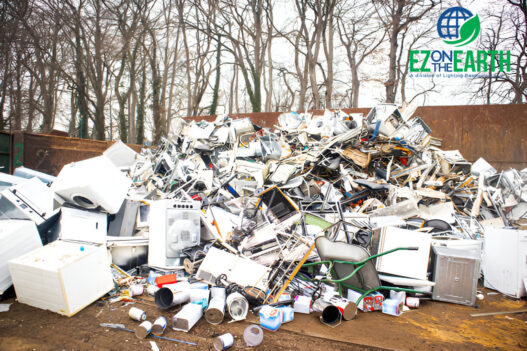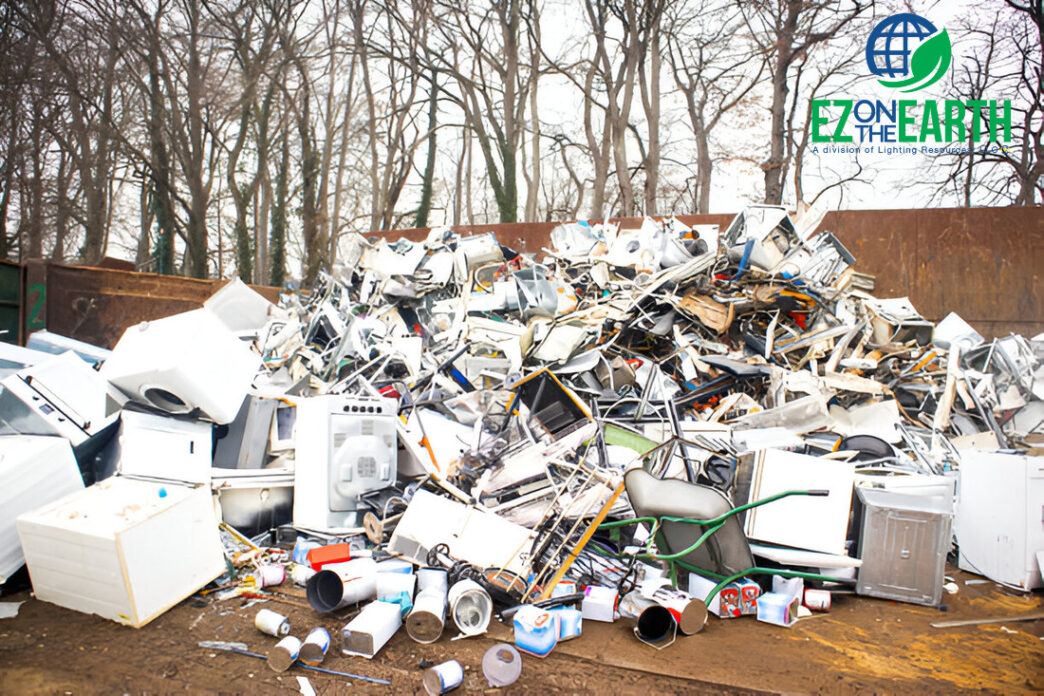In today’s environmentally conscious world, businesses and individuals are increasingly seeking ways to minimize their impact on the planet. One area that often goes overlooked is the disposal of used light bulbs. While seemingly insignificant, bulbs contain hazardous materials that can harm the environment if not disposed of properly. This is where professional bulb recycling services come into play. In this article, we will explore why recycling bulbs is essential, the types of bulbs that require special disposal, and how engaging with a reliable bulb recycling service can benefit both businesses and individuals.
Why Is Bulb Recycling Important?
Many types of light bulbs contain toxic substances, such as mercury, which is found in fluorescent lamps. Mercury is a potent neurotoxin that can contaminate air and water if the bulbs are broken or improperly disposed of in landfills. Additionally, improperly discarded light bulbs contribute to waste in landfills, where they do not decompose easily. Recycling bulbs prevents these environmental hazards by safely removing harmful chemicals and reclaiming materials like glass, aluminum, and phosphor powder for reuse in new products.
In addition to environmental concerns, many regions have regulations governing the proper disposal of bulbs, particularly those containing mercury. Complying with legal requirements by recycling bulbs helps businesses avoid fines and ensures they are playing their part in supporting sustainability efforts.
Types of Bulbs That Require Recycling
Not all light bulbs are created equal, and different types require specific recycling processes due to the materials used in their construction. Below is a list of common bulb types that should be recycled:
1. Fluorescent Lamps
Fluorescent lamps, including compact fluorescent lamps (CFLs), are among the most widely used lighting sources. These bulbs contain small amounts of mercury, which is hazardous to human health and the environment. Recycling fluorescent bulbs ensures that the mercury is properly handled and that valuable materials like glass and metal are reclaimed.
2. LED Bulbs
While LED bulbs do not contain mercury, they still consist of electronic components such as circuit boards and semiconductors that should be responsibly recycled. Recycling LEDs allows for the recovery of valuable materials like rare earth metals and prevents electronic waste from piling up in landfills.
3. Incandescent Bulbs
Although incandescent bulbs do not contain toxic chemicals like mercury, they can still be recycled. The glass and metal components of these bulbs can be recovered and reused in various manufacturing processes.
4. Halogen Bulbs
Halogen bulbs are a more efficient form of incandescent lighting but require proper recycling due to the materials involved. Recycling services help recover the glass and tungsten filament for reuse, reducing the need for raw materials.
5. High-Intensity Discharge (HID) Lamps
HID lamps, including metal halide and high-pressure sodium lamps, are commonly used in industrial settings. These bulbs contain hazardous materials, including mercury and lead, making recycling an essential process. HID lamps also contain valuable metals that can be recovered during recycling.
The Bulb Recycling Process
When you choose to recycle bulbs through a professional service, you can rest assured that the disposal process is environmentally friendly and safe. Below is a breakdown of how bulb recycling works:
1. Collection
The first step in the bulb recycling process is the collection of used bulbs. Many recycling services offer convenient collection options, such as pick-up services for businesses or drop-off locations for individuals. Collection containers are typically provided to ensure the safe transport of bulbs without the risk of breakage.
2. Sorting and Separation
Once collected, the bulbs are taken to a recycling facility, where they are sorted by type. This is important because different bulbs require different recycling methods. For example, fluorescent lamps are separated from LEDs and incandescent bulbs to ensure proper handling of hazardous materials.
3. Crushing and Containment
For bulbs containing hazardous substances like mercury, the next step is to crush them in a controlled environment using special equipment that contains the release of any harmful chemicals. This process isolates the hazardous elements, such as mercury vapor, which is safely captured for further processing.
4. Material Recovery
After hazardous materials are neutralized, the recycling facility processes the remaining materials—such as glass, metals, and phosphor powder. These materials are separated and sent to manufacturers for reuse in new products, completing the recycling loop.
Benefits of Using Professional Bulb Recycling Services
Utilizing professional bulb recycling services offers numerous advantages, from environmental protection to legal compliance and cost savings. Here are the key benefits:
1. Environmental Responsibility
By recycling bulbs, you contribute to the reduction of harmful pollutants and conserve natural resources. Recycling services ensure that hazardous substances are safely contained and that materials are reused rather than wasted.
2. Compliance with Regulations
Many regions have strict guidelines regarding the disposal of hazardous waste. Bulb recycling services are well-versed in local regulations, helping businesses remain compliant with legal requirements and avoid fines.
3. Cost Savings
Some businesses may hesitate to engage in recycling programs due to perceived costs, but recycling services often prove cost-effective in the long run. By recovering valuable materials and reducing waste disposal fees, recycling can lead to significant savings over time.
4. Positive Corporate Image
For businesses, demonstrating a commitment to sustainability can enhance their reputation with customers, employees, and stakeholders. Corporate social responsibility (CSR) initiatives, including recycling, show that a company is committed to reducing its environmental impact.
How to Choose the Right Bulb Recycling Service
When selecting a bulb recycling service, it’s essential to choose one that aligns with your specific needs and offers reliable, environmentally responsible services. Here are some factors to consider:
1. Certification and Compliance
Ensure that the recycling service is certified to handle hazardous materials and complies with local and national regulations. Look for services that follow industry best practices and have certifications such as R2 or e-Stewards.
2. Collection Options
Convenient collection options, such as on-site pick-up or drop-off locations, are critical. Businesses should seek a service that provides secure containers for bulb storage and offers flexible collection schedules.
3. Transparency and Reporting
A good recycling service should provide clear documentation and reporting on how bulbs are disposed of and what materials are recovered. This transparency is particularly important for businesses that need to demonstrate compliance with environmental regulations.
4. Cost-Effectiveness
While price should not be the sole factor, it’s important to choose a service that offers competitive pricing without compromising on quality. Some services may also provide rebates or credits for the valuable materials recovered during recycling.
Conclusion
Incorporating bulb recycling services into your waste management strategy is a smart, environmentally responsible choice. Not only does it help protect the planet by preventing hazardous materials from entering the ecosystem, but it also allows businesses and individuals to contribute to a circular economy by recovering valuable resources. By choosing the right service provider, you can ensure that your light bulbs are disposed of in a way that is both safe and compliant with regulations.









